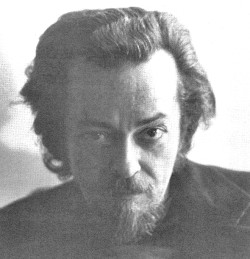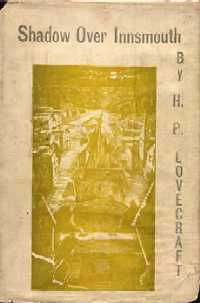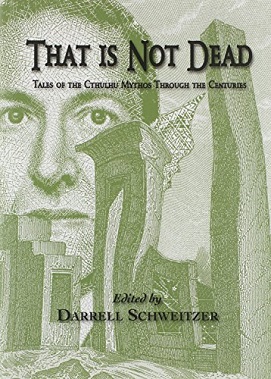
August William Derleth was an American writer and anthologist. Though best remembered as the first book publisher of the writings of H. P. Lovecraft, and for his own contributions to the Cthulhu Mythos and the Cosmic Horror genre, as well as his founding of the publisher Arkham House, Derleth was a leading American regional writer of his day, as well as prolific in several other genres, including historical fiction, poetry, detective fiction, science fiction, and biography.

The Cthulhu Mythos is a shared fictional universe, originating in the works of American horror writer H. P. Lovecraft. The term was coined by August Derleth, a contemporary correspondent and protégé of Lovecraft, to identify the settings, tropes, and lore that were employed by Lovecraft and his literary successors. The name Cthulhu derives from the central creature in Lovecraft's seminal short story, "The Call of Cthulhu", first published in the pulp magazine Weird Tales in 1928.

Howard Phillips Lovecraft was an American writer of weird fiction and horror fiction, who is known for his creation of what became the Cthulhu Mythos.

Cthulhu is a fictional cosmic entity created by writer H. P. Lovecraft and first introduced in the short story "The Call of Cthulhu", published in the American pulp magazine Weird Tales in 1928. Considered a Great Old One within the pantheon of Lovecraftian cosmic entities, the creature has since been featured in numerous popular culture references. Lovecraft depicts it as a gigantic entity worshipped by cultists, in shape like an octopus, a dragon, and a caricature of human form. Its name was given to the Lovecraft-inspired universe where it and its fellow entities existed, the Cthulhu Mythos.

Shub-Niggurath, often associated with the phrase "The Black Goat of the Woods with a Thousand Young", is a deity in the Cthulhu Mythos of H. P. Lovecraft. The only other name by which H. P. Lovecraft referred to her was "Lord of the Wood" in his story The Whisperer in Darkness.

Arkham is a fictional town situated in Massachusetts. It is a dark city and an integral part of the Lovecraft Country setting created by H. P. Lovecraft. It is featured in many of his stories and those of other Cthulhu Mythos writers.

Ramsey Campbell is an English horror fiction writer, editor and critic who has been writing for well over fifty years. He is the author of over 30 novels and hundreds of short stories, many of them widely considered classics in the field and winners of multiple literary awards. Three of his novels have been filmed.
Arkham House is an American publishing house specializing in weird fiction. It was founded in Sauk City, Wisconsin in 1939 by August Derleth and Donald Wandrei to preserve in hardcover the best fiction of H. P. Lovecraft. The company's name is derived from Lovecraft's fictional New England city, Arkham. Arkham House editions are noted for the quality of their printing and binding. The colophon for Arkham House was designed by Frank Utpatel.

Azathoth is a deity in the Cthulhu Mythos and Dream Cycle stories of writer H. P. Lovecraft and other authors. He is the ruler of the Outer Gods, and may be seen as a symbol for primordial chaos.

Hastur is an entity of the Cthulhu Mythos.

Linwood Vrooman Carter was an American author of science fiction and fantasy, as well as an editor, poet and critic. He usually wrote as Lin Carter; known pseudonyms include H. P. Lowcraft and Grail Undwin. He is best known for his work in the 1970s as editor of the Ballantine Adult Fantasy series, which introduced readers to many overlooked classics of the fantasy genre.

The Shadow over Innsmouth is a horror novella by American author H. P. Lovecraft, written in November–December 1931. It forms part of the Cthulhu Mythos, using its motif of a malign undersea civilization, and references several shared elements of the Mythos, including place-names, mythical creatures, and invocations. The Shadow over Innsmouth is the only Lovecraft story that was published in book form during his lifetime.
Many fictional works of arcane literature appear in H.P. Lovecraft's cycle of interconnected works often known as the Cthulhu Mythos. The main literary purpose of these works is to explain how characters within the tales come by occult or esoterica. However, in some cases the works themselves serve as an important plot device. Thus, in Robert Bloch's tale "The Shambler from the Stars", a weird fiction writer seals his doom by casting a spell from the arcane book De Vermis Mysteriis.

Lovecraft Country is a term coined by Keith Herber for the New England setting, combining real and fictitious locations, used by H. P. Lovecraft in many of his weird fiction stories, and later elaborated by other writers working in the Cthulhu Mythos. The term was popularized by Chaosium, the producers of the Lovecraftian role-playing game Call of Cthulhu. Lovecraft scholar S. T. Joshi refers to the area as the "Miskatonic region", after its fictional river and university. Lovecraft biographer Lin Carter calls it Miskatonic County, and the film Color Out of Space refers to it as Arkham County, although Lovecraft indicates that at least some of his fictional towns were located in the real-life Essex County of Massachusetts.
Lovecraftian horror is a subgenre of horror fiction that emphasizes the cosmic horror of the unknown more than gore or other elements of shock. It is named after American author H. P. Lovecraft (1890–1937).
The following tables and lists feature elements of the Cthulhu Mythos, that are often shared between works within that fictional setting.
The Deep Ones are creatures in the Cthulhu Mythos of H. P. Lovecraft. The beings first appeared in Lovecraft's novella The Shadow Over Innsmouth (1931), but were already hinted at in the early short story "Dagon". The Deep Ones are a race of intelligent ocean-dwelling creatures, approximately human-shaped but with a fishy appearance. They regularly mate with humans along the coast, creating societies of hybrids.
A Cthulhu Mythos anthology is a type of short story collection that contains stories written in or related to the Cthulhu Mythos genre of horror fiction launched by H. P. Lovecraft. Such anthologies have helped to define and popularize the genre.
Richard Louis Tierney is an American writer, poet and scholar of H. P. Lovecraft. He is the coauthor of a series of Red Sonja novels, featuring cover art by Boris Vallejo. Some of his standalone novels utilize the mythology of Lovecraft's Cthulhu Mythos.

That is Not Dead: Tales of the Cthulhu Mythos Through the Centuries is an anthology of original horror short stories edited by Darrell Schweitzer. It was first published in hardcover by PS Publishing in February 2015. It shares a title with That is Not Dead: The Black Magic & Occult Stories, a short story collection by August Derleth published in 2009. In both instances, the title is derived from a couplet by H. P. Lovecraft attributed to his fictional "mad poet" Abdul Alhazred: "That is not dead which can eternal lie, / And with strange aeons even death may die."